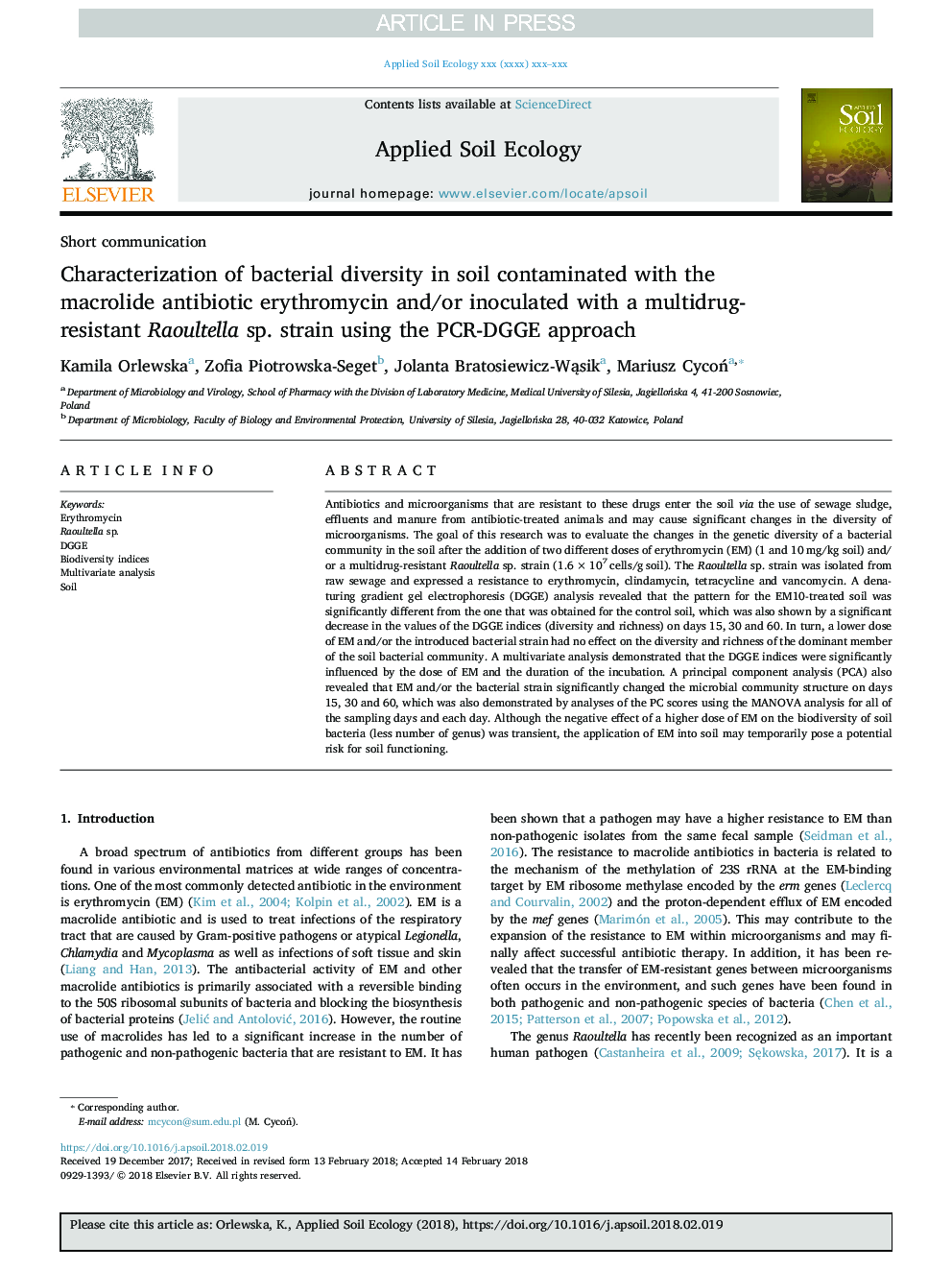| Article ID | Journal | Published Year | Pages | File Type |
|---|---|---|---|---|
| 8846665 | Applied Soil Ecology | 2018 | 8 Pages |
Abstract
Antibiotics and microorganisms that are resistant to these drugs enter the soil via the use of sewage sludge, effluents and manure from antibiotic-treated animals and may cause significant changes in the diversity of microorganisms. The goal of this research was to evaluate the changes in the genetic diversity of a bacterial community in the soil after the addition of two different doses of erythromycin (EM) (1 and 10â¯mg/kg soil) and/or a multidrug-resistant Raoultella sp. strain (1.6â¯Ãâ¯107â¯cells/gâ¯soil). The Raoultella sp. strain was isolated from raw sewage and expressed a resistance to erythromycin, clindamycin, tetracycline and vancomycin. A denaturing gradient gel electrophoresis (DGGE) analysis revealed that the pattern for the EM10-treated soil was significantly different from the one that was obtained for the control soil, which was also shown by a significant decrease in the values of the DGGE indices (diversity and richness) on days 15, 30 and 60. In turn, a lower dose of EM and/or the introduced bacterial strain had no effect on the diversity and richness of the dominant member of the soil bacterial community. A multivariate analysis demonstrated that the DGGE indices were significantly influenced by the dose of EM and the duration of the incubation. A principal component analysis (PCA) also revealed that EM and/or the bacterial strain significantly changed the microbial community structure on days 15, 30 and 60, which was also demonstrated by analyses of the PC scores using the MANOVA analysis for all of the sampling days and each day. Although the negative effect of a higher dose of EM on the biodiversity of soil bacteria (less number of genus) was transient, the application of EM into soil may temporarily pose a potential risk for soil functioning.
Related Topics
Life Sciences
Agricultural and Biological Sciences
Ecology, Evolution, Behavior and Systematics
Authors
Kamila Orlewska, Zofia Piotrowska-Seget, Jolanta Bratosiewicz-WÄ
sik, Mariusz CycoÅ,
